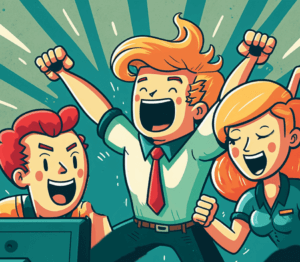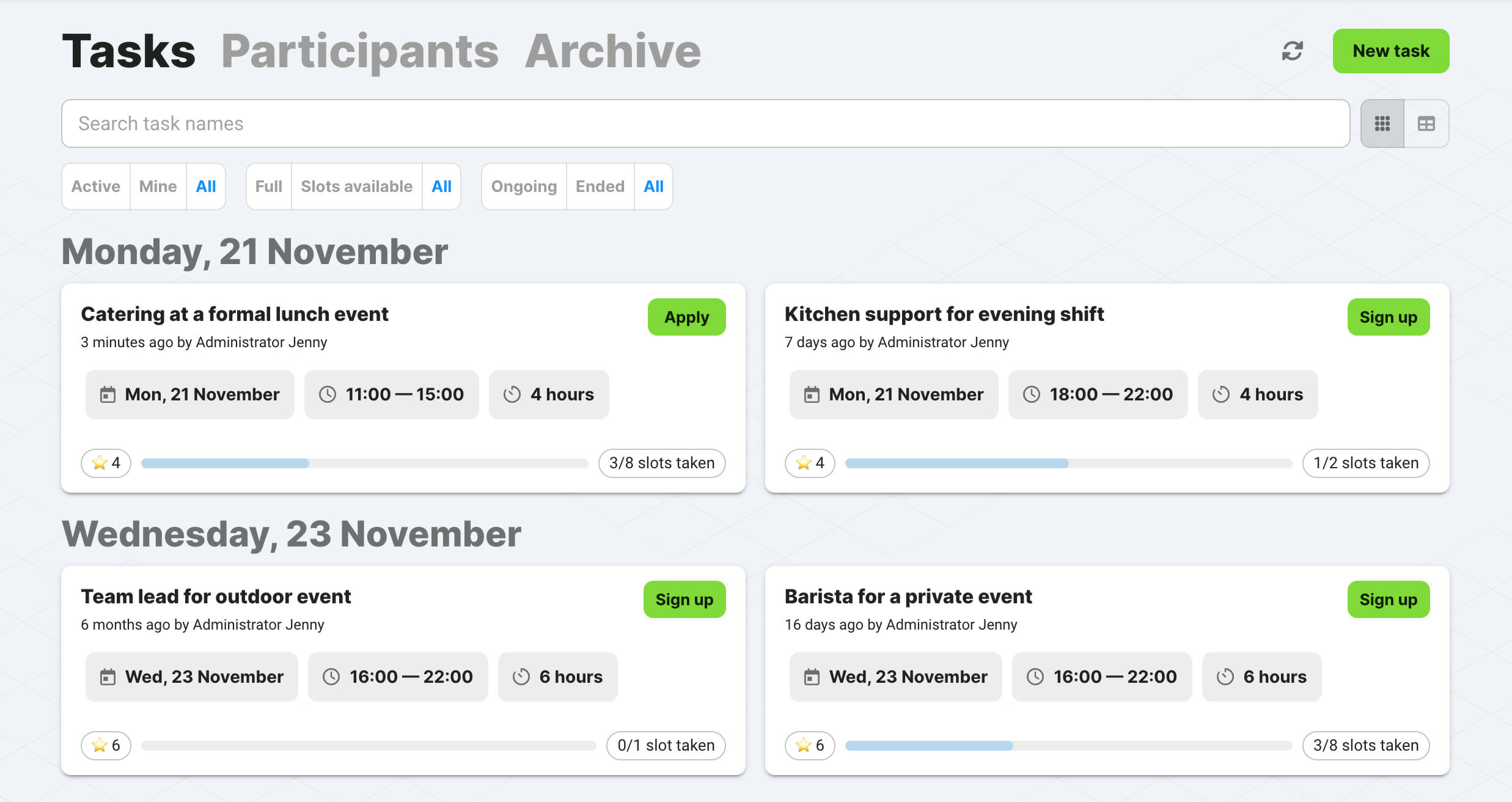Gamification is a simple way for making work more engaging by using game design elements like points, badges, and leaderboards. Introducing this kind of competitive aspect to daily work is a great way to motivate and engage employees, and add a fun aspect to daily productivity.
The upsides of gamification are especially clear when you’re working with a contingent team, contracted freelancers or hour-based employees. If work is fun and enjoyable at your company, your team members will be more satisfied and likely to return to do another job.

What can you gamify besides cold calling?
It’s very common for enterprise companies to gamify call center and sales work. Real-time feedback about how many calls get done during the day is a really obvious place to place a progress bar and leaderboard.
But what if your employees don’t sit at a desk, checking off tickets in a call center CRM? Can a small business or a local business also profit from team gamification?
Not to worry – almost all jobs can be gamified. If you’re able to break the work down to obvious pieces that can be completed in less than a day, you can already quantify and count the achievements of your team. Keep track of achievements with a central app and be creative with the rewards!
Shift exchange
The need to switch working days in the calendar can come up for everyone, so picking up a co-worker’s shift is usually done out of reciprocity. In some collectives it may be productive to further incentivize open shift pickup – and gamification is a perfect tool for this.
Dispatch
If any part of the job is done on-demand, it can easily be gamified. Whether you’re delegating cleaning shifts for incoming airBnB bookings, scheduling tour guides for personal walks, or sending personal consultants to measure curtains at your client’s location – baking in a little competitive mission can considerably upgrade the reaction times of your employees.
Education
Whether it’s about upskilling or onboarding employees to new roles, acquiring new skills or information is a no-brainer to gamify. Let employees process learning materials at their own pace, with slight motivational pressure from seeing how the rest of the group is doing.
Extra tasks
In smaller collectives, some tasks may not have a devoted owner. Brewing the morning coffee pot or ordering new paper clips may become volunteer tasks that easily get bounced from employee to employee. Gamifying these tasks can create a reasonable reward for getting these things done with the commitment they deserve.

Designing a gamified experience for the workplace
It is important that you put in the effort towards actually designing your gamification. If your game isn’t a good match with your workers, they will disengage instead of engaging.
Make winning possible for everyone. Even the average worker should have a chance at placing #1 on some weeks. Seeing the over-achiever of the group win weekly contests over and over again is not motivating for the rest of the team.
Regularly resetting the competition will create new chances at winning for everyone. You can also introduce more categories with different winning criteria, so the options to place high at one of the leaderboards are more diverse.
If you have a large amount of employees, you should consider running the competition in smaller batches. Beating a thousand others is a stressful goal, but scoring a place in the top 10 of your small department is already something worth striving for.
Team gamification ideas
One must be aware that using gifts and money prizes to award game winners can send deceptive signals about why people should be motivated towards the game goals.
Luckily gamification for employees can be much more than just dangling a carrot in front of your team members. The points and badges work best when they’re used towards a goal that matters for the participants.
Playing as a team
When team members know each other, it can be motivating to see how much the team has achieved together. Reaching collective milestones is especially rewarding if the work has some charitable aspect to it. Reaching 100 volunteer hours contributed is a goal that everyone can get behind. Similar motivation arises when the company matches the team achievements with a donation to a chosen charity.
Reality check against your peers
Comparing how you rank against your peers can be a healthy feedback tool. When the exact amount of work done during a time frame is not prescribed in detail, seeing others perform helps calibrate expectations. Public leaderboards can both calm down over-achievers and motivate the lower rankings.
Achieving your personal best
Gamification can provide a subtle support for a daily routine. Comparing one’s results with last week’s average is a healthy way to keep productivity at a stable level without comparing achievement abilities with others.
How to start with team gamification
Complex automation is not the only or even the best way to introduce gamification to your team. Simple solutions that are easy to understand for team members work much better.
You can start by a simple scorecard in a spreadsheet, or on a whiteboard on your break room wall. A simple scoreboard checks off all the basics of good gamification – a simple goal, a transparent process, and public results that update live.
However, if you need a simple digital solution for a remote team, take a look at our top list of apps for gamification, or jump directly to our gamified task management tool for teams. Zelos lets you easily track points and create leaderboards based on tasks that your team has completed.